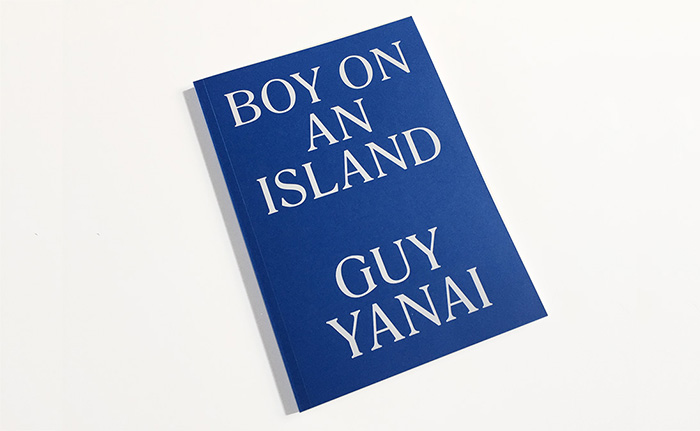GUY YANAI INFO WORKS INSTALLATION VIEWS PUBLICATIONS CV

“BOY ON AN ISLAND” is published in conjunction with the exhibition of the same name at Galerie CONRADS, from 17/03/–05/05/2018.
Galerie CONRADS & Yundler Brondino Verlag, 2018
Edition: 1st Edition of 400
ISBN 978 9657 7250 61

“Bisou Magique” is published in conjunction with the exhibition of the same name at Galerie Derouillon, Paris from May 19th – June 25th, 2016.
The exhibition has been realized, curated and organized by Yundler Brondino Verlag.
Yundler Brondino Verlag, 2016
Edition: 1st Edition of 500
Spiral bound, 22 pages
ISBN 978 9657 7250 54

GUY YANAI “FIRST WE FEEL THEN WE FALL”, 2011
Guy Yanai’s first book “FIRST WE FEEL THEN WE FALL” mixes photography, drawing, and painting in the elaboration of a unique visual language. The book opens with a trove of found images that have informed and inspired Yanai’s practice. The ‘Sources’ are followed by drawings, curatorial essays by Nuit Banai and James Trainor, and twenty two plates, including twelve oil paintings on linen, and ten oil paintings on custom birch panels. The twelve large scale paintings in the series are marked by a shallow depth of field, redolent of public billboards hawking clothing and cruises or advertisements touting the latest Hollywood blockbuster. Yet their brightly colored surfaces emerge from a rather ‘democratic’ tribute to a cross-section of filiations, including photographic, print media and film sources, art historical precedents, and the artist’s idiosyncratic memories and chain of associations. Flipping through the book, it is impossible to ignore the relationship between the artists various influences, and the mutations they undergo as they find their way into his work. The connection between Yanai’s semiotic flow of imagery is largely affective. His decision to compile and ‘curate’ an inventory of this source-material and expose it as a fundamental element in his artistic process is not without significance. What we can glean from this decision is that photography, painting, television, print media, and personal memory are all imagined as sites –or archives — that momentarily stabilize and organize the constant data flow of life as a form of representation. These media function as egalitarian apparatuses that give shape to the content of a communal imagination but cannot arrest or transform its frictions and differences into a conclusive composition.
Yundler Brondino Verlag, 2011
Edition: 1st edition of 1000 copies
Format: 250 x 188 mm
ISBN: 9789659172603
